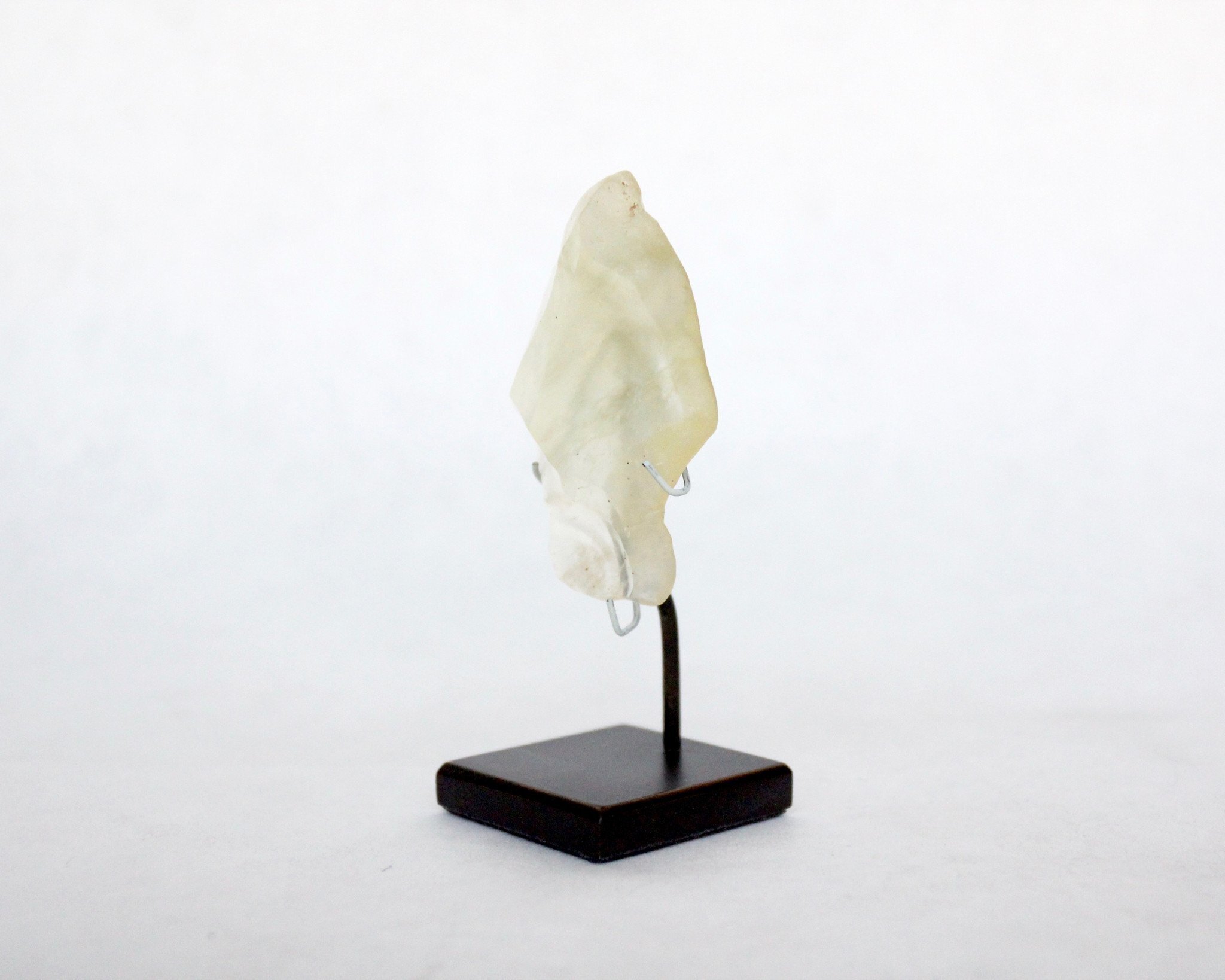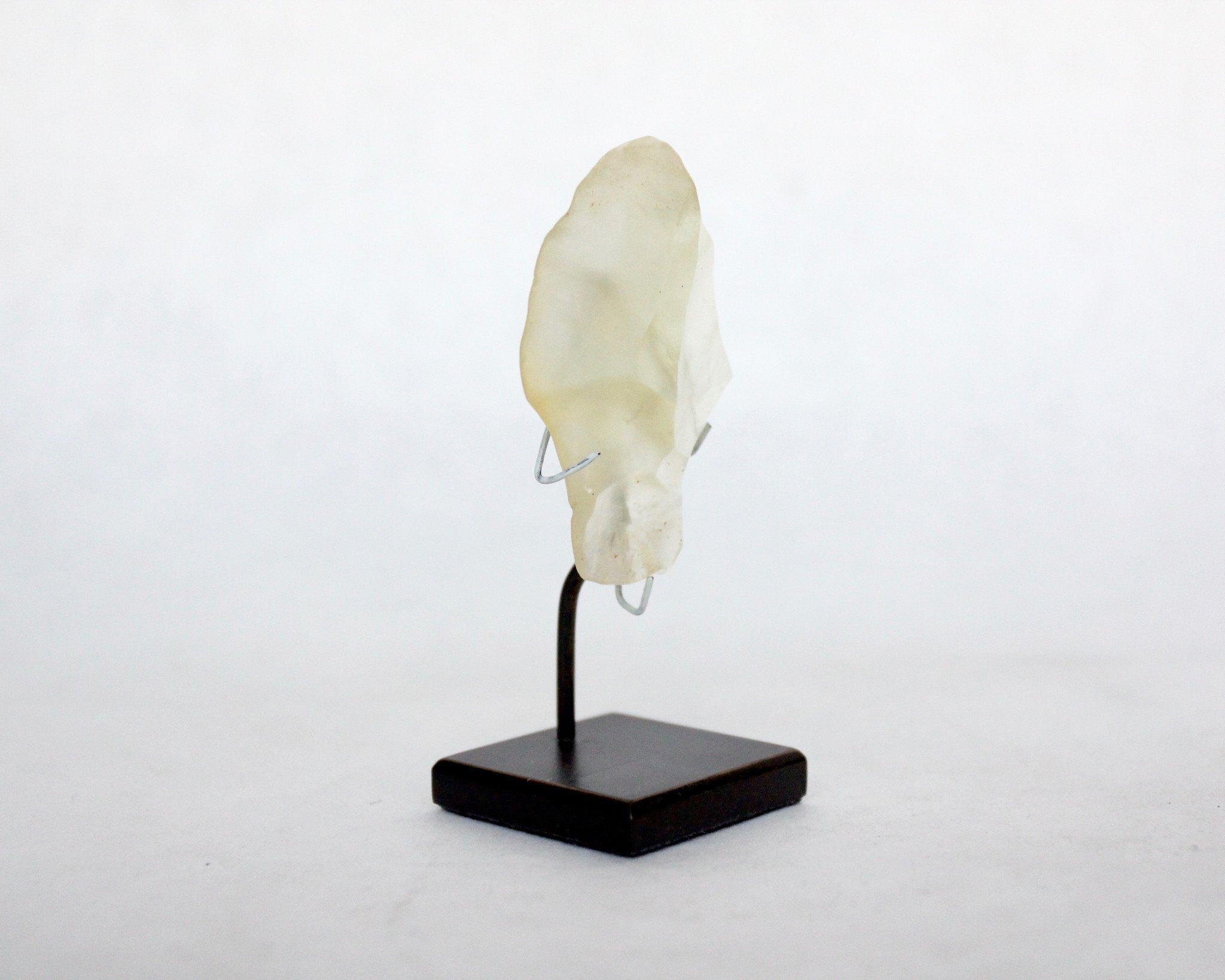Libyan Glass Aterian Point
The Aterian points of North Africa, circa 50,000 BC, represent the earliest stemmed points made by modern man. Libyan Glass, a luminous yellow-greenish material is thought to have been formed more than 20 million years ago in the sands of North Africa. Scientists theorize, in the absence of a visible impact crater, that this type of glass was created by a low density asteroid or comet airburst explosion leading to the fusion of silica rich sands. Libyan Glass was prized in antiquity including by the Pharaohs of Egypt as seen in at least one sarcophagus.
This elegant Aterian point, showing thousands of years of desert wind polish, is from the collection of an impassioned expert who states it is the sole example known to him in this material. One can only surmise that such an artifact had a significance to our ancestors well beyond its utilitarian use.
Ex. Private Collection, Paris.
Length: 5.7 cm Width: 3.9 cm Weight: 24 g
The Aterian points of North Africa, circa 50,000 BC, represent the earliest stemmed points made by modern man. Libyan Glass, a luminous yellow-greenish material is thought to have been formed more than 20 million years ago in the sands of North Africa. Scientists theorize, in the absence of a visible impact crater, that this type of glass was created by a low density asteroid or comet airburst explosion leading to the fusion of silica rich sands. Libyan Glass was prized in antiquity including by the Pharaohs of Egypt as seen in at least one sarcophagus.
This elegant Aterian point, showing thousands of years of desert wind polish, is from the collection of an impassioned expert who states it is the sole example known to him in this material. One can only surmise that such an artifact had a significance to our ancestors well beyond its utilitarian use.
Ex. Private Collection, Paris.
Length: 5.7 cm Width: 3.9 cm Weight: 24 g
The Aterian points of North Africa, circa 50,000 BC, represent the earliest stemmed points made by modern man. Libyan Glass, a luminous yellow-greenish material is thought to have been formed more than 20 million years ago in the sands of North Africa. Scientists theorize, in the absence of a visible impact crater, that this type of glass was created by a low density asteroid or comet airburst explosion leading to the fusion of silica rich sands. Libyan Glass was prized in antiquity including by the Pharaohs of Egypt as seen in at least one sarcophagus.
This elegant Aterian point, showing thousands of years of desert wind polish, is from the collection of an impassioned expert who states it is the sole example known to him in this material. One can only surmise that such an artifact had a significance to our ancestors well beyond its utilitarian use.
Ex. Private Collection, Paris.
Length: 5.7 cm Width: 3.9 cm Weight: 24 g





